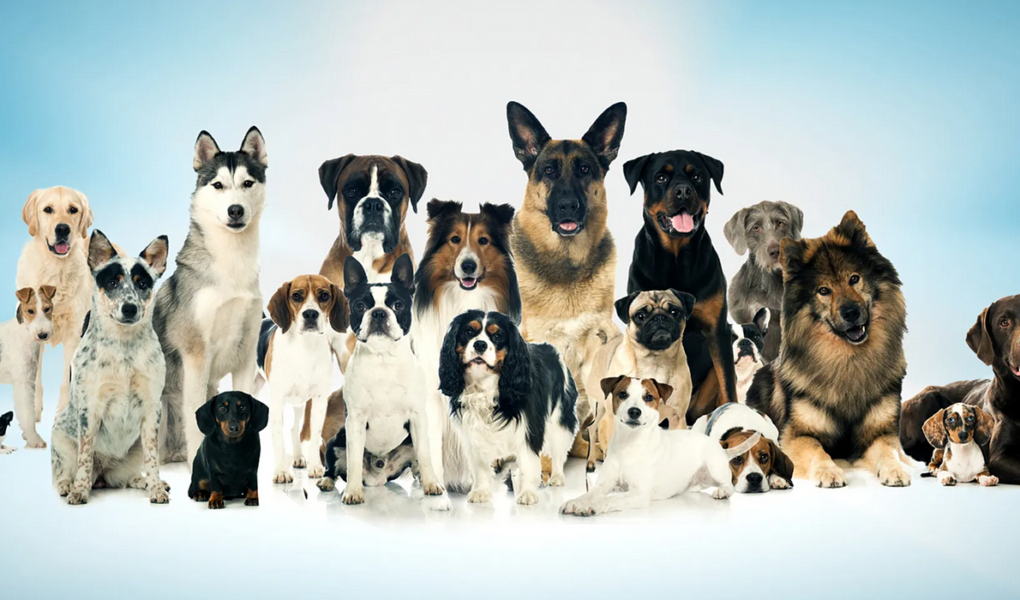Key Takeaways:
- Dogs have complex emotions and reasoning abilities. They can understand human emotions and have a unique understanding of social structures and hierarchies.
- Understanding a dog’s instinctive behaviors, such as territorial marking and digging, can help owners address and manage these behaviors.
- Genetics play a significant role in shaping a dog’s behavior, and breed-specific behaviors should be considered when training and providing mental stimulation.
- Reading canine facial expressions, decoding tail wagging, and understanding vocalizations and barking can help owners better understand their dog’s communication and emotions.
- Separation anxiety, aggression and fear, and obsessive-compulsive behaviors are common behavioral issues in dogs that can be addressed through techniques like desensitization and behavior modification.
- Successful house training involves consistency, positive reinforcement, and establishing a routine.
- Curbing excessive barking requires understanding the underlying reasons and using techniques like redirecting attention and providing mental stimulation.
- Tackling unwanted habits like nipping and jumping involves consistent training, socialization, and setting boundaries.
Understanding the Canine Mind
Dogs have been humans’ faithful companions for centuries, but understanding their behavior can still be a challenge. In this section, we will delve into the science behind canine behavior, unravel the dog’s instinctive behaviors, and explore the role of genetics and breed-specific behavior.
The Science Behind Canine Behavior
Scientists have dedicated countless hours to studying the canine mind and behavior. Through research and observation, they have discovered that dogs are highly social creatures with complex emotions and reasoning abilities.
One fascinating aspect of canine behavior is their ability to read human emotions. Dogs have been shown to understand human facial expressions and respond accordingly. Their exceptional sense of smell also allows them to detect changes in human body chemistry, such as increased heart rate or changes in hormone levels, which helps them understand our emotions even further.
Furthermore, studies have found that dogs have a unique understanding of social structures and hierarchies. This is why they can pick up on subtle cues and body language, enabling them to fit into human households with ease.
Unraveling the Dog’s Instinctive Behaviors
While dogs have been domesticated for thousands of years, they still retain many instinctive behaviors inherited from their wolf ancestors. Understanding these common dog behaviors can help owners better comprehend their dog’s actions and needs.
One common instinctive behavior is territorial marking. Dogs mark their territory to establish a sense of ownership and to communicate with other dogs. This behavior can sometimes lead to urine marking inside the house, especially in male dogs. By understanding this instinct, owners can take steps to address and manage territorial marking issues.
Another instinctive behavior seen in dogs is the urge to dig. Dogs dig for various reasons, including burying bones or toys, creating a cool spot to rest, or seeking entertainment. Some dogs may even dig out of anxiety or frustration. Recognizing the underlying motivation behind this behavior can help owners provide appropriate outlets for their dog’s digging instincts.
The Role of Genetics and Breed-Specific Behavior
Genetics play a significant role in shaping a dog’s behavior. Different breeds have been selectively bred for specific traits and purposes, resulting in variations in temperament, energy levels, and behavioral tendencies.
For example, herding breeds such as Border Collies have a natural instinct to round up and control the movement of other animals. This instinct can manifest in behaviors such as chasing cars or nipping at the heels of family members. Understanding breed-specific behaviors can help owners anticipate and address these tendencies through appropriate training and mental stimulation.
It is important to remember that while genetics provide a foundation, individual experiences and environment also play a crucial role in a dog’s behavior. By understanding both genetic predispositions and environmental factors, owners can create a nurturing and conducive environment for their dogs to thrive.
Decoding Body Language and Communication
Communication is key in any relationship, and dogs communicate primarily through body language. In this section, we will explore how to read canine facial expressions, decode tail wagging, and understand vocalizations and barking.
Reading Canine Facial Expressions
A dog’s face can tell us a lot about their emotional state. By paying attention to their eyes, ears, and mouth, we can understand whether a dog is relaxed, fearful, or stressed.
For instance, a dog with relaxed, open eyes and a slightly open mouth often indicates a calm and contented state. On the other hand, narrowed eyes, tense facial muscles, and a closed mouth may indicate fear or aggression. By familiarizing ourselves with these facial expressions, we can better respond to our dogs’ needs and emotions.
Cracking the Code of Tail Wagging
Tail wagging is one of the most recognizable and misunderstood forms of dog communication. While many people think that a wagging tail always means a dog is happy, it is not always the case.
The position and speed of the wag, along with other body language cues, can provide insights into a dog’s emotional state. A loose and relaxed wag usually indicates happiness and friendliness, while a stiff and rapid wag could indicate agitation or potential aggression.
It is important to consider tail wagging in conjunction with other body language signals to accurately interpret a dog’s communication and respond appropriately.
Understanding Vocalizations and Barking
Dogs use vocalizations, including barking, to communicate their needs, emotions, and warnings. By understanding the different types of barks, we can decipher their messages more effectively.
For example, a high-pitched, rapid bark may indicate excitement or an invitation to play, while a deep, prolonged bark may signal a warning or a response to perceived threats. Additionally, whining, growling, and howling are all forms of vocalization that convey specific meanings depending on the context.
By paying attention to the tone, pitch, and accompanying body language, we can better understand our dog’s vocalizations and address their needs accordingly.
Unmasking the Underlying Causes of Behavioral Issues
Behavioral issues are common in dogs and can stem from various underlying causes. In this section, we will explore separation anxiety, aggression and fear, as well as obsessive-compulsive behaviors, to help identify triggers and find appropriate solutions.
Separation Anxiety: Causes and Solutions
Separation anxiety occurs when a dog becomes distressed or exhibits excessive behaviors when separated from their owners. This condition can be caused by various factors, such as lack of socialization, traumatic experiences, or changes in the household dynamics.
Identifying the signs of separation anxiety, such as destructive behavior, excessive barking, or soiling the house, is crucial in addressing the issue. Gradual desensitization techniques, behavior modification, and providing mental stimulation can help alleviate separation anxiety and create a sense of security for the dog.
Aggression and Fear: Identifying the Triggers
Aggression and fear-based behaviors can be challenging to address as they often stem from past traumatic experiences, poor socialization, or fear of specific triggers.It is essential to identify the triggers that provoke aggression or fear in a dog to effectively manage and modify their behavior.
Working with a professional dog trainer or behaviorist can provide insights into techniques such as counter-conditioning and desensitization, which can help the dog learn new, positive associations with the triggers, ultimately reducing aggression or fear responses.
Obsessive-Compulsive Behaviors: Breaking the Cycle
Obsessive-compulsive behaviors in dogs can manifest in various forms, such as excessive licking, tail chasing, or repetitive pawing.
These behaviors can be a result of anxiety, boredom, or genetics. By providing appropriate mental and physical stimulation, creating a predictable routine, and using positive reinforcement techniques, owners can help break the cycle of obsessive-compulsive behaviors and redirect their dog’s energy toward more constructive outlets.
Addressing Common Problematic Behaviors
Problematic behaviors can disrupt the harmonious relationship between dogs and their owners. In this section, we will discuss essential tips for successful house training, techniques to curb excessive barking, and effective strategies to tackle nipping and jumping.
House Training Woes: Tips for Success
House training is one of the first and most critical tasks when bringing a new dog into the home. Consistency, positive reinforcement, and patience are key elements in successful house training.
Establishing a routine, supervising the dog closely, and rewarding appropriate bathroom behavior can help teach the dog where and when to relieve themselves. Should accidents occur, it is essential to avoid punishment and focus on reinforcing desirable bathroom habits.
Curbing Excessive Barking: Techniques that Work
Excessive barking can be a nuisance, both for dog owners and their neighbors. Understanding the underlying reasons behind excessive barking, such as boredom, anxiety, or territoriality, is crucial in addressing this behavior.
Techniques such as redirecting the dog’s attention, providing mental stimulation, and consistent training can help curb excessive barking. Additionally, using positive reinforcement to reward desired quiet behavior and seeking professional assistance if necessary can also be beneficial.
Nipping and Jumping: Tackling Unwanted Habits
Nipping and jumping are common unwanted behaviors seen in dogs, particularly during their puppy stages. While these behaviors may initially seem harmless, they can develop into larger issues if not addressed promptly.
Consistent training, socialization, and setting boundaries are crucial in curbing nipping and jumping behaviors. Teaching the dog appropriate alternatives, such as sitting for attention or offering a toy, can redirect their energy and reinforce positive behaviors.
In conclusion, understanding canine behavior is key to building a strong and fulfilling relationship with our furry companions. By delving deep into the science behind their behavior, decoding their communication, addressing underlying causes of behavioral issues, and tackling common problematic behaviors, we equip ourselves with valuable knowledge to better care for and communicate with our dogs.
FAQ
Question: What is the science behind canine behavior? – Scientists have discovered that dogs have complex emotions and reasoning abilities. They can read human emotions, understand social structures, and have a unique understanding of hierarchies.
Question: What are some of the instinctive behaviors dogs have? – Dogs have instinctive behaviors such as territorial marking and digging. Territorial marking is a way for them to establish ownership and communicate with other dogs. Digging can serve various purposes like burying bones or seeking entertainment.
Question: How does genetics play a role in shaping a dog’s behavior? – Genetics play a significant role in a dog’s behavior. Different breeds have been selectively bred for specific traits, resulting in variations in temperament, energy levels, and behavioral tendencies. Understanding breed-specific behaviors can help anticipate and address certain tendencies.
Question: How can we read a dog’s facial expressions? – A dog’s facial expressions can convey a lot about their emotional state. Relaxed eyes and an open mouth indicate calmness, while narrowed eyes and a closed mouth may indicate fear or aggression.
Question: What does tail wagging indicate? – Tail wagging can indicate various emotional states. A loose and relaxed wag usually signifies happiness, while a stiff and rapid wag may indicate agitation or potential aggression.
Question: How do dogs communicate through vocalizations and barking? – Dogs use vocalizations, including barking, to communicate their needs, emotions, and warnings. The tone, pitch, and accompanying body language provide insights into their messages.
Question: What are some common underlying causes of behavioral issues in dogs? – Separation anxiety, aggression and fear, and obsessive-compulsive behaviors are common underlying causes of behavioral issues in dogs. These can be addressed through techniques like desensitization, behavior modification, and providing mental stimulation.
Question: How can we address common problematic behaviors like excessive barking and nipping? – Curbing excessive barking involves understanding the underlying reasons behind it, redirecting attention, providing mental stimulation, and consistent training. Tackling nipping and jumping behaviors requires consistent training, socialization, and setting boundaries.




